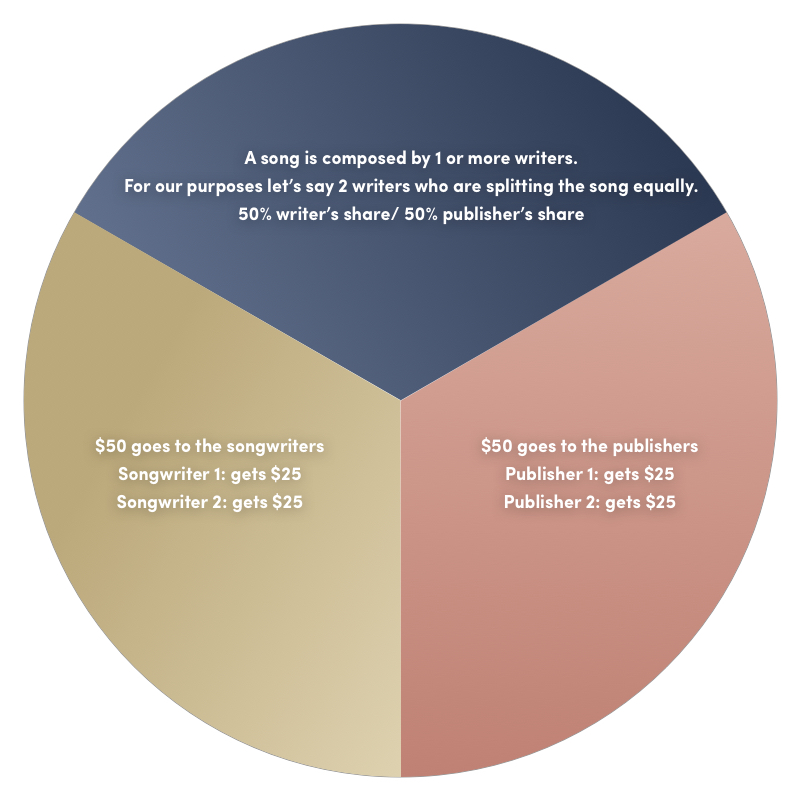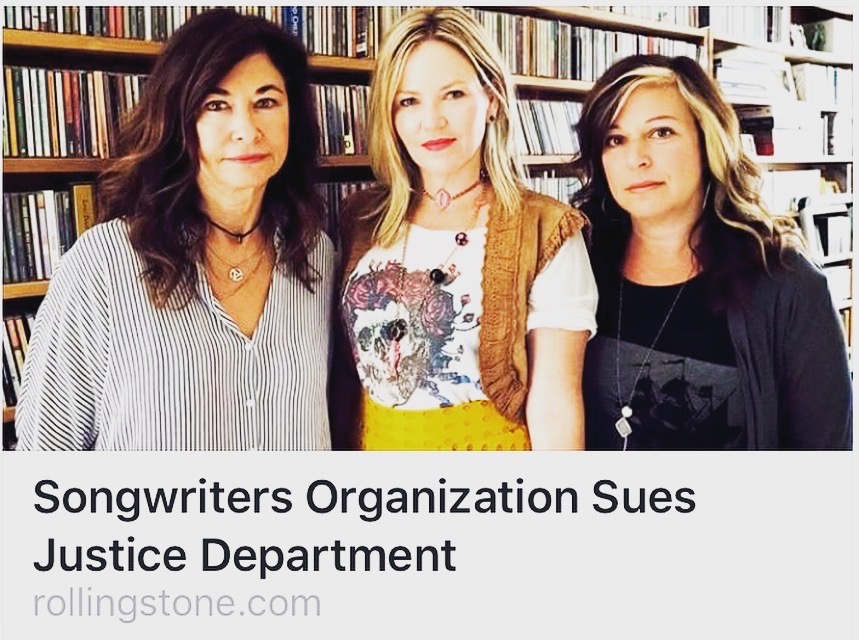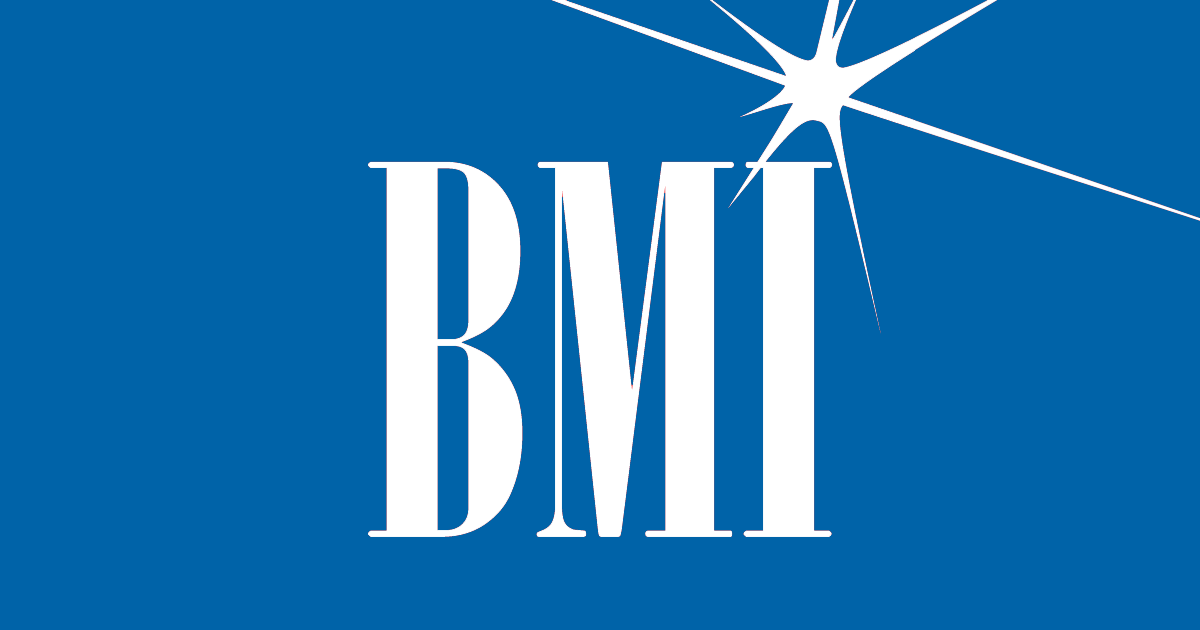IMPORTANT CONCEPT:
Every song’s revenue is divided into two separate parts:
- the writer’s share
and
2. the publisher’s share
Let’s look at a few examples:
- You sit down and write a song by yourself. The minute you do you are now both a songwriter AND A PUBLISHER. You own both the writer’s share AND the publisher’s share. The songwriter (you) is the author/writer, and the publisher (you) controls the publishing rights, commonly called “the publishing.”
- You sit down and write a song with your best friend Molly. Typically, each of you now owns an equal share of the rights to the song, 50% of the writer’s share and 50% the publishers share. This is commonly called the “song splits.”
- We can apply this basic concept to any writing situations that occur in which there are multiple writers. Maybe you are one of several “topliners” who came in and wrote over a producer’s track. You, the producer, and all the other writers have to agree on the song “splits”: the percentage of the song that each of you owns and controls, as a writer
- AND as a publisher..
- Take a look at this chart below. If we use an example of $100 of income, it would be split as follows;

Mechanical Royalties
When a physical copy of a recording is sold, the owner of the master (usually the record company) pays the publisher of the song a mechanical royalty. Physical (i.e. mechanical) copies used to be just record albums and 45’s, and then came to include CDs, downloads. The publisher keeps 50% of this income (the publisher’s share) and pays the remaining 50% (the writer’s share) to the songwriter.
***If you are self-published, you the publisher would keep the 50% publisher’s share and pay you the writer your 50% writer’s share.***
Thanks to the Music Modernization Act, there is now a digital mechanical payment for every interactive stream of a song (ie. Spotify, Apple, Amazon). For more on this see the next tab called “Streaming.”
Performance Royalties
Performance royalties are paid by radio stations, TV networks and stations, digital radio, bars, restaurants i.e. any entity that publicly broadcasts music. These royalties are collected by the PROs.
***Unlike mechanical royalties, where the publisher keeps 50% of this income (the publisher’s share) and pays the remaining 50% (the writer’s share) to the songwriter, the PROs pay 50% of the performance royalties (the writer’s share) to the songwriters directly, and the publisher’s share to publishers directly.***
Synch Fees
When a sound recording/master is used in a film, TV show, commercial, or other audio/visual media, it must be licensed from both the owner of the master and the owner of the song. These are separate licenses, but they are typically issued for an identical fee (most favored nations basis.) On the master side, the master owner (ie. record company) makes the deal. On the publishing or “synch” side (which stands for synchronization with picture), the publisher makes the deal (on behalf of themselves and the songwriter).
The fees are then paid directly to the record company for the right to use the master, and directly to the publisher for the right to use the song (composition). The publisher will keep its share and pay the remainder to the songwriter depending upon the terms of their publishing deal.
***It is important to note that the owner of the master and the owner of the song must both agree to the usage and to a licensing fee for the audio/visual project to use the recording.***
These are the basic concepts and three basic sources of revenue that every songwriter should know.

Advocacy, December 30, 2023
Story of SONA

News, September 1, 2023
The BMI sale: A News Roundup

News, May 16, 2024
SONA and Sona.stream amicably settle over use of trademark “SONA” name

News, January 25, 2024
SONA amplifying songwriter voices with key new advocacy leadership positions
Let’s Chat!
Questions? Get in touch with us by filling out the contact form below. We’ll get back to you as soon as we can.
